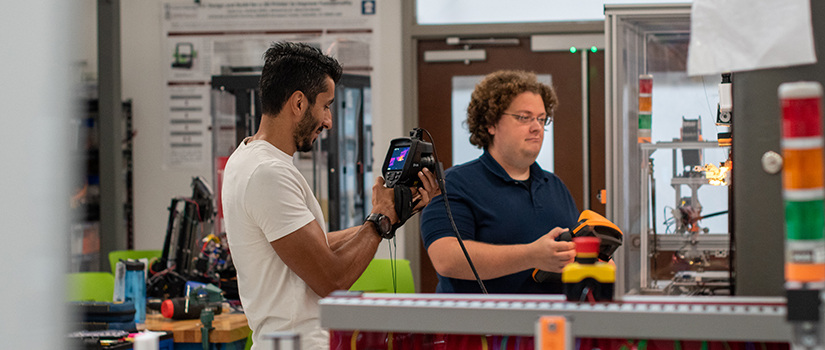By Abe Danaher | July 21, 2020
Within three years of completing their doctorates, Wout De Backer and Darun Barazanchy are co-principal investigators at the center of the aerospace industry’s most prestigious grant. They never expected this when they left Delft University of Technology to advance their aerospace education at South Carolina. But, the College of Engineering and Computing’s unique model of learning through an academic work floor prepared them to lead the state’s growing work in advanced manufacturing research and development.
“Our students are being introduced to cutting-edge aerospace technologies, not only from a particular research subject, but also from interdisciplinary research endeavors, therefore preparing them to be leaders in the evolving aerospace industry.”
- Associate Professor Sang Hee Won
During their time as students at the CEC, their advisors Michel van Tooren and Victor Giurgiutiu empowered them to lead research projects in a way that doctoral and postdoctoral students are rarely allowed to do. They were also given direct networking opportunities with industry leaders across the state of South Carolina through the McNair Aerospace Center’s extensive industry partnerships. This allowed them to become key researchers in a seemingly endless stream of high-level research in aerospace manufacturing and modeling.
“We’ve never been low on projects," De Backer says. "So, there are a lot of applications for our research out there. I think the limitation we’ve had so far is the number of projects we can accept due to the sheer volume of projects we’ve already taken on.”
With the college’s growing influence in the state of South Carolina’s manufacturing industry, the two say they’ve typically worked on around five projects at a time since being hired, first as post-doctoral research fellows, and now as research assistant professors. As the aerospace industry continues to make its aircraft lighter, De Backer’s expertise in continuous filament 3D printing and Barazanchy’s expertise in numerical modeling have been in constant demand.
“Lighter structures sound like just one thing, but it’s basically a snowball effect,” Barazanchy says as he explains the importance of lighter structures and the increase in demand for his work. “A lighter structure results in less weight, less weight leads to a reduction of fuel economy and a reduced impact on the environment. If you go from thermoset to thermoplastic, you get the benefits of say, higher fatigue loads. Then the maintenance cycles can be extended. And so on.”
“One of the industry needs we’re focused on is production rate improvements,” De Backer adds. “We are heavily invested in automation of manufacturing processes and thermoplastic materials, which allow fastener-free assembly. These are especially interesting for the rapidly growing Urban Air Mobility market and research, also referred to as the flying car/taxi or cargo drone.”
Despite the aerospace industry’s growth, especially in South Carolina, and its new demands for aerospace professionals, finding talent for their research teams has been easy, thanks to the research programs and interest of students at UofSC.
The College of Engineering and Computing’s McNair Junior Fellows program, which supports more than 20 undergraduate researchers each summer, and the McNair Center’s 200 student interns have provided them with exceptional talent to sustain their current research demands. Now, as they look to grow their research, they hope the college’s new aerospace engineering program – the only in the state – can provide even more top-flight talent to their teams and the state of South Carolina.
“It will be good for the education level here, for the university, just locally for South Carolina and the more national base in the U.S. to attract more students that can actually help us with this workload,” says Barazanchy, who also teaches aerospace undergraduate classes with De Backer.
“This program will fill a much-needed void in South Carolina and the aerospace industry as a whole,” says Sang Hee Won, an associate professor of mechanical engineering and the director of UofSC’s aerospace engineering program. “Our students are being introduced to cutting-edge aerospace technologies, not only from a particular research subject, but also from interdisciplinary research endeavors, therefore preparing them to be leaders in the evolving aerospace industry.”
With the team's recent $5.7 million NASA grant and their growing partnerships with Boeing, General Motors, Joby Aviation, Spirit AeroSystems, and Collins Aerospace, Barazanchy and De Backer do not expect this workload to decrease. Despite having less than one year as research assistant professors under their belts, they plan to continue pushing the aerospace industry forward in the coming years.
“When we started six years ago, there was a big road ahead of us to get the McNair Center nationally and internationally on the map,” De Backer says. “Now, we’ve made significant progress in achieving that. I think the key part is that we are not done yet, and we should never consider it done. As long as we are here as researchers, Darun and I are committed to the college and the McNair Center and, together with the other researchers and faculty, we strive for making it the best it can be.”
